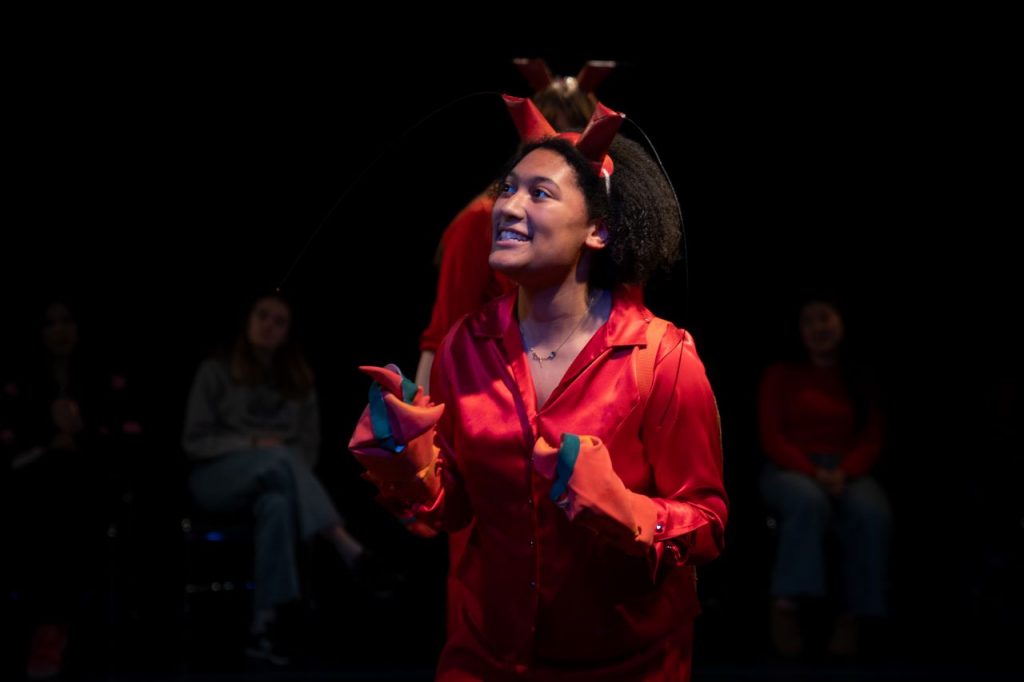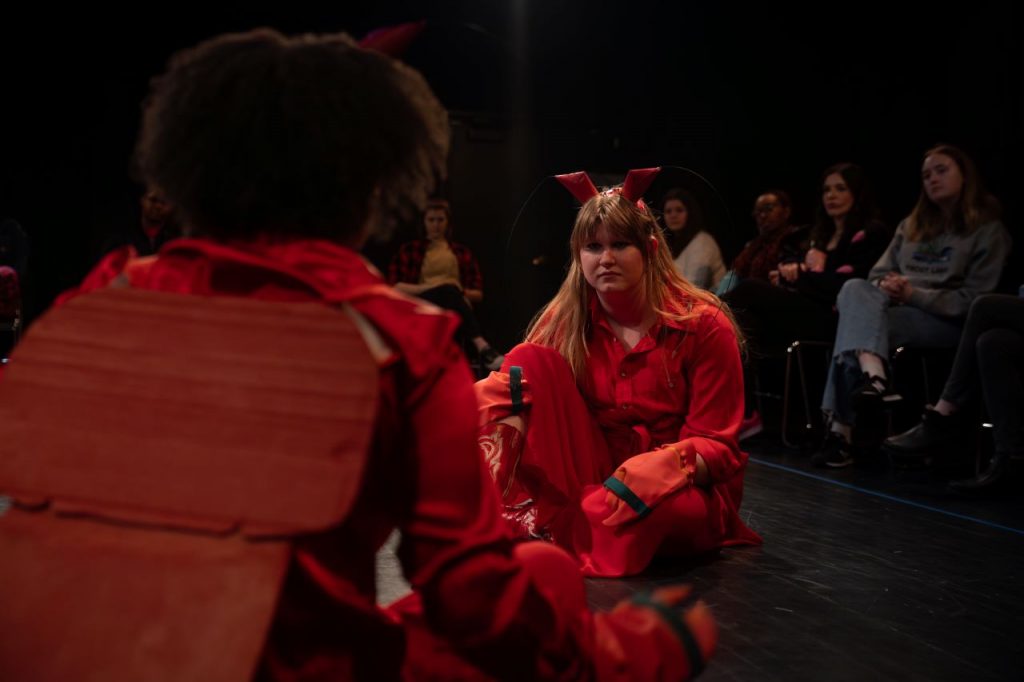BY BEN HARRIS ’27

The short but entertaining In The Tank by Rosemary Frisino Toohey, directed by Ellery Shea ‘25, prioritizes the relationship between actor and spectator by deftly inviting the audience in. With a sign that reads “Please don’t disturb the lobsters,” jazzy restaurant music playing in the back, and an in-the-round staging to represent the tank containing the lobsters, Shea achieves an immersive atmosphere.
Even before the show begins, one of the two lobsters, Liz (Katie Steele ‘26), is already on stage lying down motionless. When the lights dim to start the show, the other lobster, Stu (Olivia Berenson ‘24), arrives excitedly and attempts to rouse Liz up. Liz responds by telling Stu to play dead and to look as unappetizing as possible to avoid ending up on someone’s plate. Being that he is new to the tank, Stu is confused by Liz’s pessimism and challenges them to have a different outlook. The lobster implores Liz to rethink of their purpose as “enriching the earth”, a mindset that can hopefully help them find a way to appreciate the short lives they have been given. At first, Stu’s words are convincing until the lobster accidentally refers to Liz as “meat”, a sobering reminder why they need to play dead: in order not to become that very thing.

Stu is unbothered by Liz’s return to the floor and starts dancing to the audience. When Liz demands them to stop, Stu asks the point of living if all they’re going to do is play dead. Liz reasons that the “humans” (their captors), and the human species as a whole, have complete power over them. For whatever evolutionary reason, humans are at the top of the food chain, are the most intelligent, and the most hungry for power in all of the animal kingdom.
Stu counters this with what they call “The Theory”, a theory that believes human beings are also in a tank, much like the lobsters, but because they’re not aware of it, they’re rarely ever ready for death. Stu remarks, truthfully, that many people die from stupid decisions such as unbuckled seatbelts and margaritas; despite having brains, humans lack the instincts of survival. The only instinct they know, Stu explains, is mating, which coincidentally causes the brain to completely turn off. Stu finishes their ramblings with, “The seaweed is always greener on the other side” while Liz continues to wonder about the “evolutionary reason” for human dominion.

The two lobsters wonder if, perhaps, their species is evolving and moving up the food chain. Naturally, humans would be afraid of the lobsters taking over, which may explain Liz and Stu’s containment in the tank and the rubber bands around their claws. Liz and Stu then pivot to talking about their lives before the tank; Stu reveals that in addition to living in the ocean, they were in a Talking Books production studio.
When Liz finally understands Stu near the end of the play, they apologize for calling them (Stu) a “nut”. With both Lobsters now in acceptance of their fate, the two ponder on life as a whole, with Stu remarking, “None there be can rehearse the whole tale.”
The play lacks a clear-cut ending, concluding with the same uncertainty that began the play. Although the two lobsters’ fates are unknown, both are more equipped to face whatever life throws at them. Similar to this semester’s earlier lab Hippos of the Eastern Enclosure, the non-human characters in In The Tank serve as reflections of the human condition, who by the end start to feel like actual people. More importantly, both plays tackle the question of containment: how different is a lobster trapped in a tank from a human being trapped in their mind? Are we in an invisible tank being watched until inevitable death, just like the lobsters?
Photos by Coltrane Cho ’24
***
Ben Harris ’27 is a staff writer for the Skidmore Theater Living Newsletter
